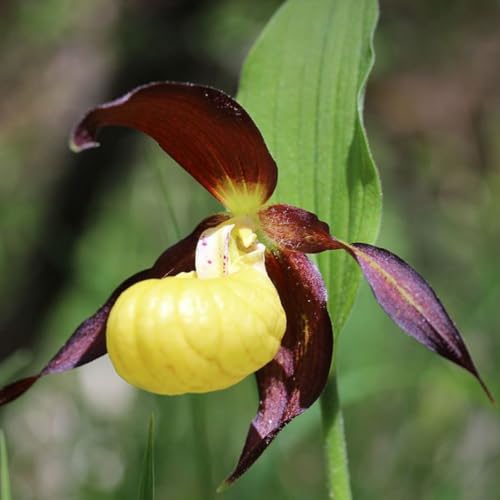John M
Orchid Addict
Thanks Kyle. I don't have any angle and don't mean to come off as confrontational. I just find it very frustrating that there isn't more information and photos available. There is a real mystery surrounding this species; almost as if there is some sort of conspiracy going on.....which is crazy of course. However, the discovery of the type specimen was suspect at first ..... at least until it was proven to breed true. Then, the lack of information following has fed the whole mystery. I'm just curious; as I am sure are many other people.
I love to see photos of orchids in-situ. I remember when besseae was new and photos of blooming plants in-situ began to show up in the literature. I drooled over those photos many times. The same can be said for kovachii. I've just found it very frustrating that fischeri has been around for a long time now and the information is sketchy at best. It does breed true, so obviously it is a true species; but, the lack of information and photos in-situ is very perplexing.....and frustrating for an enthusiast like me. I guess my frustration came through in my post above. Sorry if it seemed like I was challenging you. Up until now, I hadn't heard that fischeri had been found in the wild and I thought that all Phrag. fischeri in cultivation are decendents of that one plant found amongst the shipment of schlimiis. So, when you posted your comment about posting photos and where it grows in the wild, that REALLY caught my attention. I wanted to know how you knew this. Had you been to the site? If not, was your information from a credible source? Were the photos that you posted of in-situ plants? Can you post a link to the photos that you posted? Etc.
About Ecuagenera. Even if they were disorganized back when fischeri was brand new to science. For one plant to show up in a bunch of schlimiis, someone MUST have gone to the fischeri site in the wild and collected that plant. If the site is so terribly remote and difficult to get to, why would they collect just one plant? It seems more reasonable that they would've collected many plants. Where are they now? Who collected them? Etc., etc., etc. There are still a lot of questions that can be asked. The provinence of fischeri is still rather clouded in mystery.
Kyle, I supposed in a nutshell, my point is this: Your comment ("I've posted pictures in the past. It grows on the Colombian/ecuadorian border."), was very "matter of fact". Yet, to me, this was ground breaking news, not long established fact. I hadn't heard this before. So, this is exciting news to me. Now I'm filled with questions and renewed curiosity to know "what's the deal" with Phrag. fischeri?....what is it's full story?
I love to see photos of orchids in-situ. I remember when besseae was new and photos of blooming plants in-situ began to show up in the literature. I drooled over those photos many times. The same can be said for kovachii. I've just found it very frustrating that fischeri has been around for a long time now and the information is sketchy at best. It does breed true, so obviously it is a true species; but, the lack of information and photos in-situ is very perplexing.....and frustrating for an enthusiast like me. I guess my frustration came through in my post above. Sorry if it seemed like I was challenging you. Up until now, I hadn't heard that fischeri had been found in the wild and I thought that all Phrag. fischeri in cultivation are decendents of that one plant found amongst the shipment of schlimiis. So, when you posted your comment about posting photos and where it grows in the wild, that REALLY caught my attention. I wanted to know how you knew this. Had you been to the site? If not, was your information from a credible source? Were the photos that you posted of in-situ plants? Can you post a link to the photos that you posted? Etc.
About Ecuagenera. Even if they were disorganized back when fischeri was brand new to science. For one plant to show up in a bunch of schlimiis, someone MUST have gone to the fischeri site in the wild and collected that plant. If the site is so terribly remote and difficult to get to, why would they collect just one plant? It seems more reasonable that they would've collected many plants. Where are they now? Who collected them? Etc., etc., etc. There are still a lot of questions that can be asked. The provinence of fischeri is still rather clouded in mystery.
Kyle, I supposed in a nutshell, my point is this: Your comment ("I've posted pictures in the past. It grows on the Colombian/ecuadorian border."), was very "matter of fact". Yet, to me, this was ground breaking news, not long established fact. I hadn't heard this before. So, this is exciting news to me. Now I'm filled with questions and renewed curiosity to know "what's the deal" with Phrag. fischeri?....what is it's full story?












































